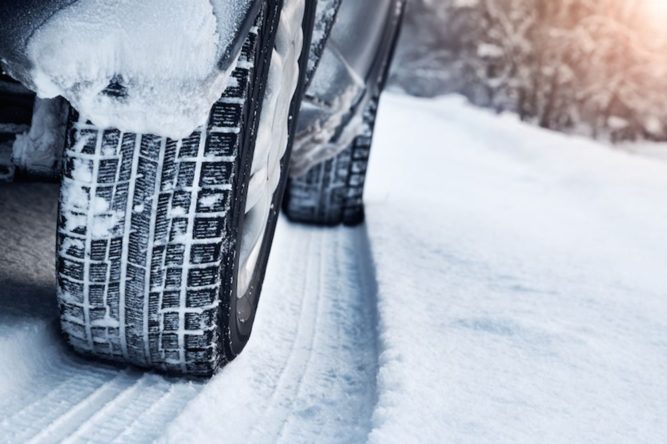
Some people swear by rear wheel drive cars, until the weather starts to turn. In ideal conditions, a rear-wheel drive car can give you optimum road performance: your back tires do all of the powering, while your front tires do all of the steering. The problem is, on icy and snowy roads, that can be a dangerous mix if you don’t know what to do. Instead of trading in your rear wheel drive car for a four-wheel drive monster truck (or an all-wheel drive SUV), simply put the following tips into practice to make sure you get where you’re going safe and sound.
- Slow down! This is the case for all vehicles in icy or snowy conditions, but even more so with rear-wheel drive cars which can have a tendency to lose control in bad driving conditions. Forget posted speed limits when it comes to driving on snowy roads. Only drive at a speed you’re comfortable with and never feel as if you have to keep up with the flow of traffic. If someone else wants to barrel past you on an icy road, that’s their problem.
- Keep a safe driving distance between yourself and any cars in front of you. Winter snow makes it hard to stop on a dime, even for four-wheel drive vehicles. Remember the three-second rule: use a landmark or a specific point in the road to ensure that you’ve got enough distance to be able to count out a full “three-Mississippies” before you reach the same marker.
- Anticipate your stops and look far ahead on the road for any obstacles. If you’re nearing an intersection with a traffic light, start slowing down in advance if you don’t think you’ll make it before the light turns red. Likewise, if you’re approaching an intersection and the green light turns yellow, keep sailing through if you don’t have enough room to stop safely. It would be better to run the tail end of a yellow light than to skid through the intersection on snowy tires.
- Be gentle. Yanking your steering wheel around or slamming on your brakes only makes driving matters worse.
- Practice makes perfect. If you’re unsure how your rear-wheel drive car will handle in adverse weather conditions, find yourself an empty parking lot somewhere and practice steering, stopping, and accelerating until you get a feel for how your car handles.
If you’re not careful, piloting your rear-wheel drive car on snow or ice can be dangerous. Your rear tires can spin out, and your front tires can slide around, making you lose steering control. If you do own a rear-wheel drive car, inclement weather conditions don’t have to be dangerous as long as you put into practice the tips we’ve outlined above.
Need to schedule car repair or maintenance work? Start with Openbay. Compare pricing and book service from quality local shops with the click of a button. Openbay is car repair for today’s world.
